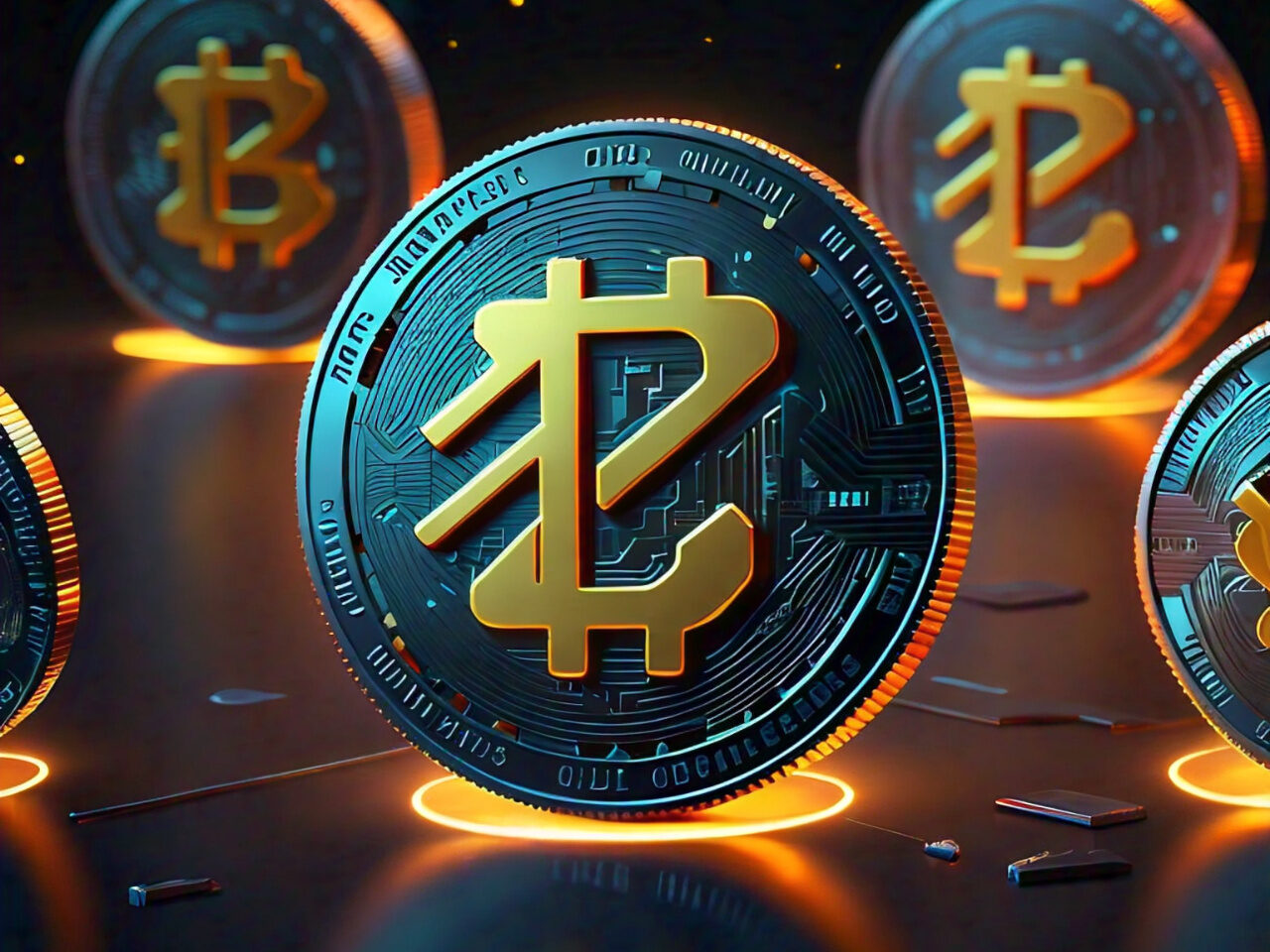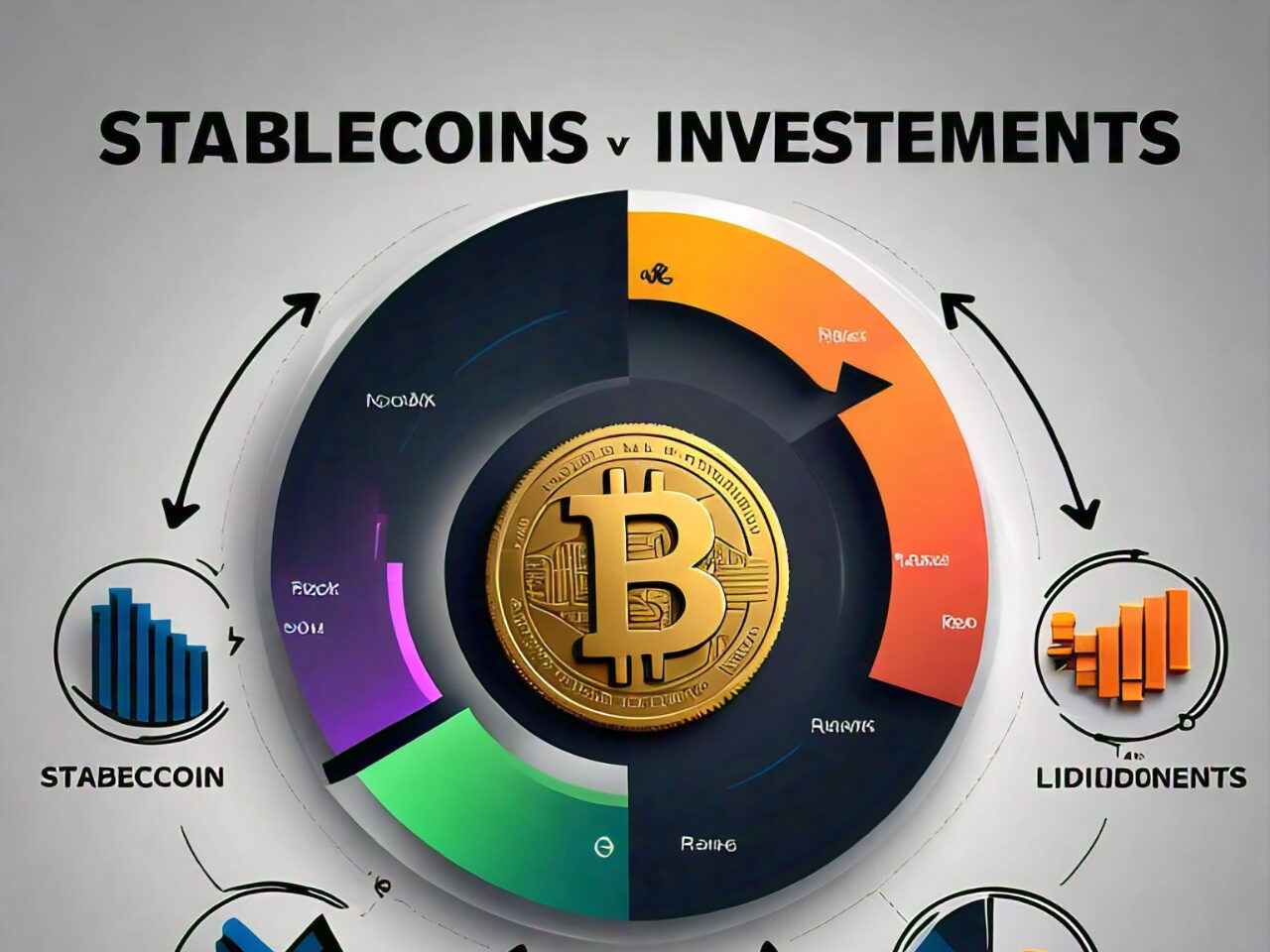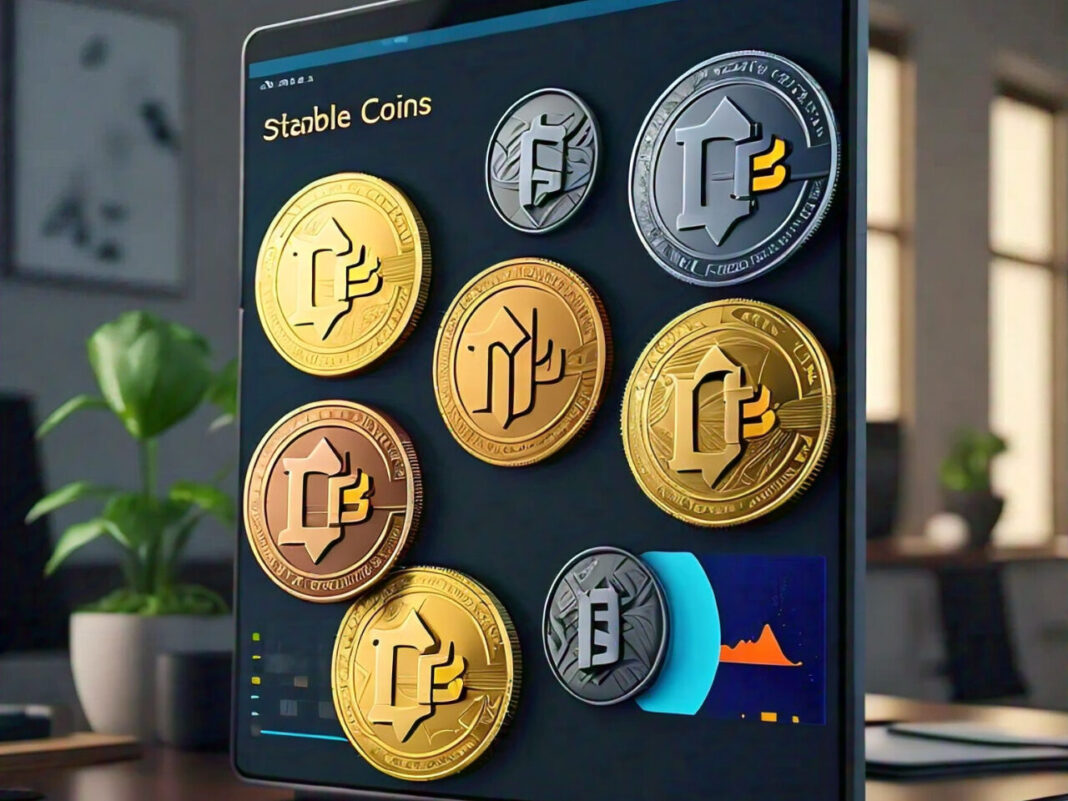
As the cryptocurrency market continues to evolve, stablecoins have emerged as a compelling option for investors seeking stability and security in a notoriously volatile space. With the global cryptocurrency market capitalization projected to reach $32.4 trillion by 2027, understanding stablecoins has become increasingly important for crypto-curious individuals and seasoned investors alike.
What are Stablecoins?
Stablecoins are cryptocurrencies designed to maintain a stable value relative to a fiat currency, commodity, or other external reference point. They achieve this stability through various mechanisms, such as collateralization, algorithmic adjustments, or hybrid approaches. This stability makes stablecoins an attractive haven for investors seeking to mitigate market fluctuations.
Why Stablecoins Matter in 2024
In 2024, stablecoins are poised to play a pivotal role in the cryptocurrency ecosystem. With regulatory clarity improving, institutional adoption increasing, and innovative financial applications emerging, stablecoins are no longer just a niche product. They have become a crucial component of the broader digital asset landscape.
Purpose of this Guide
This comprehensive guide aims to provide crypto-curious individuals with an in-depth understanding of stablecoins, their benefits, risks, and potential applications. We will delve into the world of stablecoins, exploring their mechanics, investment potential, market trends, and comparisons to traditional assets. Whether you’re a seasoned investor or just starting your cryptocurrency journey, this guide will equip you with the knowledge to navigate the stablecoin landscape with confidence.
Understanding Stablecoins
What are Stablecoins?
Stablecoins are cryptocurrencies designed to maintain a stable value relative to a fiat currency, commodity, or other external reference point. They achieve this stability through various mechanisms:
Types of Stablecoins
There are three primary categories of stablecoins:
- Fiat-Backed Stablecoins: Pegged to a fiat currency (e.g., USDT, USDC)
- Collateralized with fiat currency reserves
- Example: USDT is backed by US dollars held in reserve
- Crypto-Backed Stablecoins: Collateralized with other cryptocurrencies (e.g., DAI)
- Use cryptocurrency reserves to maintain stability
- Example: DAI is collateralized with Ethereum
- Algorithmic Stablecoins: Use algorithms to adjust supply and maintain stability (e.g., FRAX)
- Adjust supply based on market conditions
- Example: FRAX adjusts its supply to maintain a stable value
Real-Life Examples
- USDT (Tether): A fiat-backed stablecoin pegged to the US dollar
- DAI: A crypto-backed stablecoin collateralized with Ethereum
- FRAX: An algorithmic stablecoin adjusting supply to maintain stability
How Do Stablecoins Work?
Stablecoins maintain stability through:
- Collateralization: Reserves of fiat currency or other cryptocurrencies
- Algorithmic Adjustments: Supply adjustments based on market conditions
- Hybrid Approaches: Combining collateralization and algorithmic adjustments
Mechanisms for Maintaining Stability
- Pegging: Maintaining a fixed exchange rate with the reference asset
- Reserve Management: Managing collateral reserves to ensure stability
- Rebalancing: Adjusting supply to maintain stability
Benefits of Stablecoins
Stablecoins offer:
- Stability: Reduced price volatility
- Liquidity: Easy conversion to fiat currency or other cryptocurrencies
- Security: Collateralization and reserve management ensure stability
Please review this section. Provide feedback on:
- Clarity and concision
- Relevance to the target audience
- Suggested changes or additions
Investment Potential
Are Stablecoins a Good Investment?
Stablecoins offer a unique blend of stability and potential returns, making them an attractive option for investors.
Pros:
- Reduced Volatility: Stablecoins minimize price fluctuations, providing a stable store of value.
- Liquidity: Stablecoins are widely traded and easily convertible to fiat currency or other cryptocurrencies.
- Security: Collateralization and reserve management ensure stability.
- Diversification: Stablecoins provide a low-risk addition to a diversified investment portfolio.
Cons:
- Lower Returns: Stablecoins typically offer lower returns compared to other cryptocurrencies.
- Regulatory Uncertainty: Changing regulations may impact stablecoin stability.
- Counterparty Risks: Default or credit risks associated with issuers or counterparties.
Comparison to Traditional Investments
| Investment | Returns | Risk | Liquidity |
|---|---|---|---|
| Stablecoins | 5-10% | Low | High |
| Bonds | 2-5% | Low | Medium |
| Dividend-paying Stocks | 4-8% | Medium | Medium |
| Bitcoin | 50-100% | High | High |
Can Stablecoins Provide Returns?
Stablecoins offer various ways to generate returns:
Yield Farming and Staking
- Compound: Earn 5-10% APY on USDT, USDC, and DAI holdings.
- Aave: Earn 8-12% APY on stablecoin deposits.
- Curve: Earn 10-15% APY on stablecoin liquidity provision.
Lending and Borrowing
- BlockFi: Lend stablecoins to earn 10-20% APY.
- Celsius: Lend stablecoins to earn 8-15% APY.
- Nexo: Borrow stablecoins against cryptocurrency collateral.
How to Invest in Stablecoins?
Investing in stablecoins is straightforward:
Exchanges and Platforms
- Binance: Trade stablecoins with low fees.
- Coinbase: Buy and sell stablecoins with ease.
- Kraken: Trade stablecoins with advanced features.
Wallets and Storage
- Ledger: Securely store stablecoins offline.
- Trezor: Protect stablecoin holdings with advanced security.
- MetaMask: Manage stablecoin balances in a user-friendly interface.
Risk Assessment

What Are the Risks Associated with Stablecoins?
Stablecoins, like any investment, carry inherent risks.
Market Volatility Risks
- Price Fluctuations: Stablecoin prices can deviate from their peg.
- Liquidity Risks: Illiquidity can impact stablecoin redemption.
Regulatory Uncertainty Risks
- Changing Regulations: Regulatory shifts can impact stablecoin stability.
- Compliance Risks: Non-compliance can result in fines or penalties.
Security Risks
- Hacking: Stablecoin wallets or exchanges can be compromised.
- Smart Contract Vulnerabilities: Code flaws can exploit stablecoin contracts.
Real-Life Examples:
- Tether (USDT) Controversy: Questions surrounding reserve management.
- DAI Stability Issues: Price fluctuations due to market volatility.
- Compound Hack: $80 million exploit due to smart contract vulnerability.
Are Stablecoins Safer Than Other Cryptocurrencies?
Stablecoins offer stability mechanisms:
Comparison to Bitcoin and Ethereum
| Cryptocurrency | Volatility | Stability Mechanism |
|---|---|---|
| Bitcoin | High | None |
| Ethereum | High | None |
| Stablecoins | Low | Collateralization/Algorithmic Adjustments |
Stability Mechanisms
- Collateralization: Reserves backing stablecoin issuance.
- Algorithmic Adjustments: Supply adjustments maintaining stability.
Potential Pitfalls of Investing in Stablecoins
Beware of:
Liquidity Risks
- Illiquidity: Difficulty redeeming stablecoins.
- Withdrawal Limitations: Restrictions on stablecoin withdrawals.
Counterparty Risks
- Default Risk: Issuer or counterparty default.
- Credit Risk: Creditworthiness of issuers or counterparties.
Real-Life Examples:
- TerraUSD (UST) Collapse: Liquidity crisis and stablecoin depeg.
- Celsius Network Pause: Withdrawal limitations due to liquidity issues.
Market Trends and Predictions
Will Stablecoins Grow in Popularity in 2024?
Stablecoins are gaining traction:
Expert Opinions
- Increased Adoption: Institutions and individuals seeking stability.
- Improving Regulations: Clarity and compliance driving growth.
Market Analysis
- Growing Demand: Stablecoin market capitalization increasing.
- Expanding Use Cases: DeFi, payments, and remittances.
Real-Life Examples:
- USDC Growth: 50% increase in market capitalization in 2022.
- DAI Adoption: Integrated into multiple DeFi protocols.
How Will Stablecoins Perform in a Bear/Bull Market?
Stablecoins have historically performed well:
Historical Performance
| Market Condition | Stablecoin Performance |
|---|---|
| Bear Market | Stablecoins maintained stability |
| Bull Market | Stablecoins provided liquidity |
Future Prospects
- Increased Demand: Stability sought during market downturns.
- Improving Liquidity: Enhanced trading and redemption.
Real-Life Examples:
- Tether (USDT) Stability: Maintained peg during 2022 market downturn.
- Circle (USDC) Resilience: Weathered market volatility in 2022.
Expert Predictions for Stablecoins in 2024
Industry experts forecast:
Interviews with Industry Experts
- Stablecoin Growth: 20-30% increase in market capitalization.
- Regulatory Clarity: Improved compliance and stability.
Survey Results
- 75% of respondents expect stablecoin adoption to increase.
- 60% predict improved regulatory clarity.
Real-Life Examples:
- Binance Stablecoin Predictions: 25% growth in stablecoin trading volume.
- Coinbase Stablecoin Projections: 30% increase in stablecoin holdings.
Comparison with Other Assets
How Do Stablecoins Compare to Traditional Currencies?
Stablecoins offer unique benefits:
Fiat Currency vs. Stablecoin
| Fiat Currency | Stablecoin | |
|---|---|---|
| Volatility | Low | Low |
| Borderless | No | Yes |
| Interest Rates | Variable | Fixed |
| Counterparty Risk | Low | Medium |
Real-Life Examples:
- US Dollar (USD): Stablecoin pegged to USD, minimizing exchange rate risks.
- Euro (EUR): Stablecoin pegged to EUR, providing stability in uncertain markets.
Stablecoins vs. Other Cryptocurrencies
Stablecoins differ significantly:
Bitcoin and Ethereum Comparison
| Cryptocurrency | Volatility | Stability Mechanism |
|---|---|---|
| Bitcoin | High | None |
| Ethereum | High | None |
| Stablecoins | Low | Collateralization/Algorithmic Adjustments |
Altcoin Analysis
- Tether (USDT): Most widely traded stablecoin.
- USD Coin (USDC): Fastest-growing stablecoin.
Stablecoins vs. Traditional Investments

Stablecoins offer distinct advantages:
Stocks and Bonds Comparison
| Investment | Returns | Risk | Liquidity |
|---|---|---|---|
| Stocks | 4-8% | Medium | Medium |
| Bonds | 2-5% | Low | Medium |
| Stablecoins | 5-10% | Low | High |
Real-Life Examples:
- S&P 500 Index Fund: Stablecoins offer higher returns with lower risk.
- 10-Year Treasury Bond: Stablecoins provide higher liquidity and stability.
Comparison Summary
| Asset Class | Volatility | Returns | Liquidity | Risk |
|---|---|---|---|---|
| Stablecoins | Low | 5-10% | High | Low |
| Traditional Currencies | Low | 0-2% | Medium | Low |
| Other Cryptocurrencies | High | 50-100% | High | High |
| Stocks | Medium | 4-8% | Medium | Medium |
| Bonds | Low | 2-5% | Medium | Low |
Conclusion
Stablecoins have emerged as a vital component of the cryptocurrency ecosystem:
- Stability: Stablecoins minimize price volatility.
- Liquidity: Stablecoins provide easy conversion to fiat currency or other cryptocurrencies.
- Security: Collateralization and reserve management ensure stability.
Real-Life Examples:
- Tether (USDT): Most widely traded stablecoin with $60 billion market capitalization.
- USD Coin (USDC): Fastest-growing stablecoin with $50 billion market capitalization.
- DAI: Decentralized stablecoin with $10 billion market capitalization.
Future Outlook
Stablecoins will continue to play a crucial role:
- Increased Adoption: Institutions and individuals seeking stability.
- Improving Regulations: Clarity and compliance driving growth.
- Expanding Use Cases: DeFi, payments, and remittances.
Recommendations
For investors and users:
- Diversify: Include stablecoins in your portfolio.
- Research: Understand stablecoin mechanisms and risks.
- Choose Reputable Issuers: Select established and compliant stablecoin issuers.
Final Thoughts
Stablecoins have revolutionized the cryptocurrency landscape:
- Providing stability in uncertain markets.
- Enabling seamless transactions and liquidity.
- Paving the way for mainstream adoption.
By understanding stablecoins and their potential, you can navigate the cryptocurrency market with confidence.
Additional Resources
For further learning:
- Stablecoin issuers: Tether, Circle, MakerDAO.
- Cryptocurrency exchanges: Binance, Coinbase, Kraken.
- Industry reports: Deloitte, PwC, EY.






